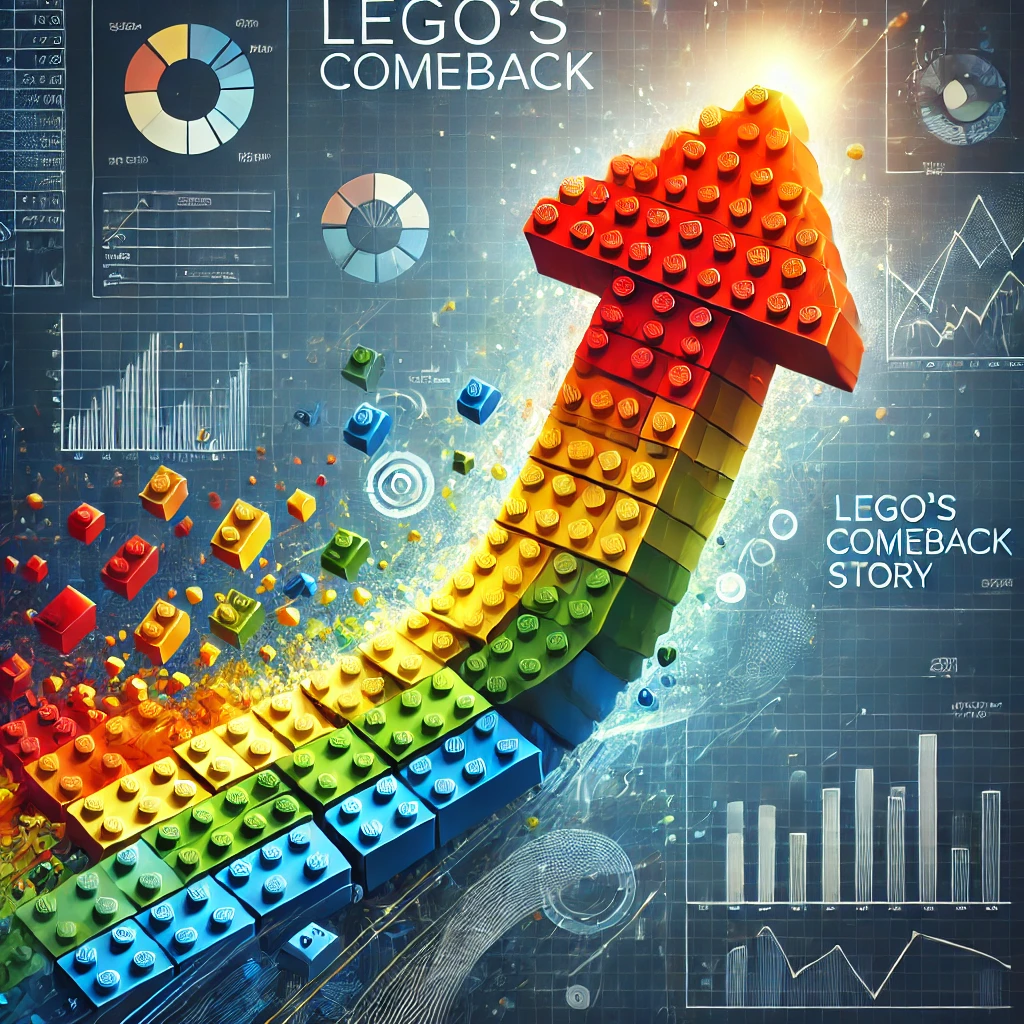In the early 2000s, LEGO, the beloved toy brand, was on the brink of collapse. 😱 But today? LEGO stands tall as a global creative powerhouse, inspiring kids and adults alike. 🌍
This wasn’t just a stroke of luck—it was a masterclass in business strategy, innovation, and resilience. 💪
Startup founders, buckle up. There’s a lot to learn from LEGO’s remarkable comeback story. Let’s dive into what went wrong, what went right, and how you can apply these insights to your own ventures. 🚀
1. A Crisis of Identity
LEGO’s trouble started when it lost sight of its core identity. In an attempt to diversify, the company ventured into products and businesses that had little to do with its iconic building blocks. 🔨
The result? A diluted brand, confused customers, and dwindling sales. 📉
Takeaway: Stay true to your core mission. While diversification can be beneficial, straying too far from your primary identity can confuse customers and weaken your brand. Stick to what you do best! 🧱
2. The Power of Refocusing
LEGO’s leadership realized the company needed a radical shift. They returned to their roots: the brick. 🧩 This decision was pivotal in their remarkable turnaround. 🔥
By refocusing on their core product, LEGO reinvigorated its brand and reconnected with its audience. 🚀
Actionable Insight: Identify your core strengths and ensure they’re at the heart of your business. Regularly revisit your mission to ensure every strategic decision aligns with your values. 🧐
3. Innovate Around Your Strengths
While LEGO returned to its roots, it didn’t just stick to the same old formula. They innovated around their core product. 🧩
From LEGO-themed movies and video games to partnerships with franchises like Star Wars, LEGO found new ways to stay relevant and appeal to both new and old fans. 🌟
Tip: Innovate within your niche. Find fresh ways to present your core offering to new audiences or in new contexts. Think of complementary products, strategic partnerships, or digital transformations. 📱
4. Listening to the Community
One of LEGO’s smartest moves was involving its community in product development. 🗣️
Initiatives like the LEGO Ideas platform, where fans could submit and vote on new set ideas, not only engaged their audience but also led to successful products like the LEGO Saturn V rocket. 🚀
Lesson for Startups: Engage with your customers. Use surveys, feedback forms, or social media to understand their needs. Consider crowdsourcing ideas or implementing user suggestions into your product roadmap. 💬
5. Streamline Operations
LEGO’s comeback wasn’t just about better products; it was also about smarter operations. 🧑🏭
The company trimmed its product line, closed inefficient factories, and streamlined its supply chain. This saved millions of dollars and increased profitability. 💰
Operational Advice: Regularly audit your processes. Identify inefficiencies and areas where you can cut costs without sacrificing quality. Lean operations can free up resources for growth initiatives. 🔍
6. Data-Driven Decisions
LEGO leveraged data analytics to understand customer behavior and market trends. 📈 This insight allowed them to make informed decisions about product development, marketing, and sales strategies. 💡
Pro Tip: Use data to guide your decisions. Implement analytics tools to track customer behavior, product performance, and market trends. Use this data to make strategic choices that are grounded in reality. 📉
7. Embracing Digital Transformation
LEGO recognized the importance of digital transformation early on. They embraced e-commerce, developed digital products, and created interactive, educational content to engage the digital-native generation. 🎮
Suggestion for Founders: Look for digital opportunities in your business. Whether it’s an online store, a mobile app, or digital content, find ways to enhance your product offering through technology. 📱
8. Strategic Collaborations
LEGO’s partnerships with brands like Marvel, Disney, and Harry Potter were game-changers. 🏰
These collaborations introduced LEGO to new audiences and revitalized its product lineup with fresh, exciting themes. 🎬
Collaborative Strategy: Identify brands or businesses with complementary strengths. Strategic partnerships can help you reach new customers, share resources, and innovate faster. Look for win-win scenarios where both parties benefit. 🌟
9. Storytelling and Marketing
LEGO mastered the art of storytelling, crafting narratives around its products that resonated with both children and adults. 🎉
Their marketing campaigns focus on building an emotional connection, not just selling toys. ❤️
Marketing Insight: Focus on storytelling. Showcase the value your product brings, the problems it solves, or the joy it can provide. Craft a narrative that connects with your audience on an emotional level. 📖
10. Building a Strong Company Culture
LEGO’s revival was also due to a strong, positive company culture. The company fosters creativity, collaboration, and innovation among its employees, which has translated into better products and a stronger brand. 🌱
Culture Tip: Invest in your team. Create a culture that encourages innovation and collaboration. A happy, motivated team is more likely to drive your company toward success. 💡
Conclusion: From Crisis to Creative Giant
LEGO’s story is a testament to the power of resilience, focus, and strategic reinvention. 💥
By returning to its roots and innovating around its strengths, LEGO not only avoided bankruptcy but also became a creative giant in the toy industry. 🎡
For startup founders, LEGO’s journey offers valuable lessons in staying true to your core, embracing innovation, and building a brand that resonates deeply with its audience. 🌍
Take a page from LEGO’s playbook. Stay focused, be strategic, and always put your customers at the center of your decisions. 📝 Your own comeback story could be just around the corner. 🏆










